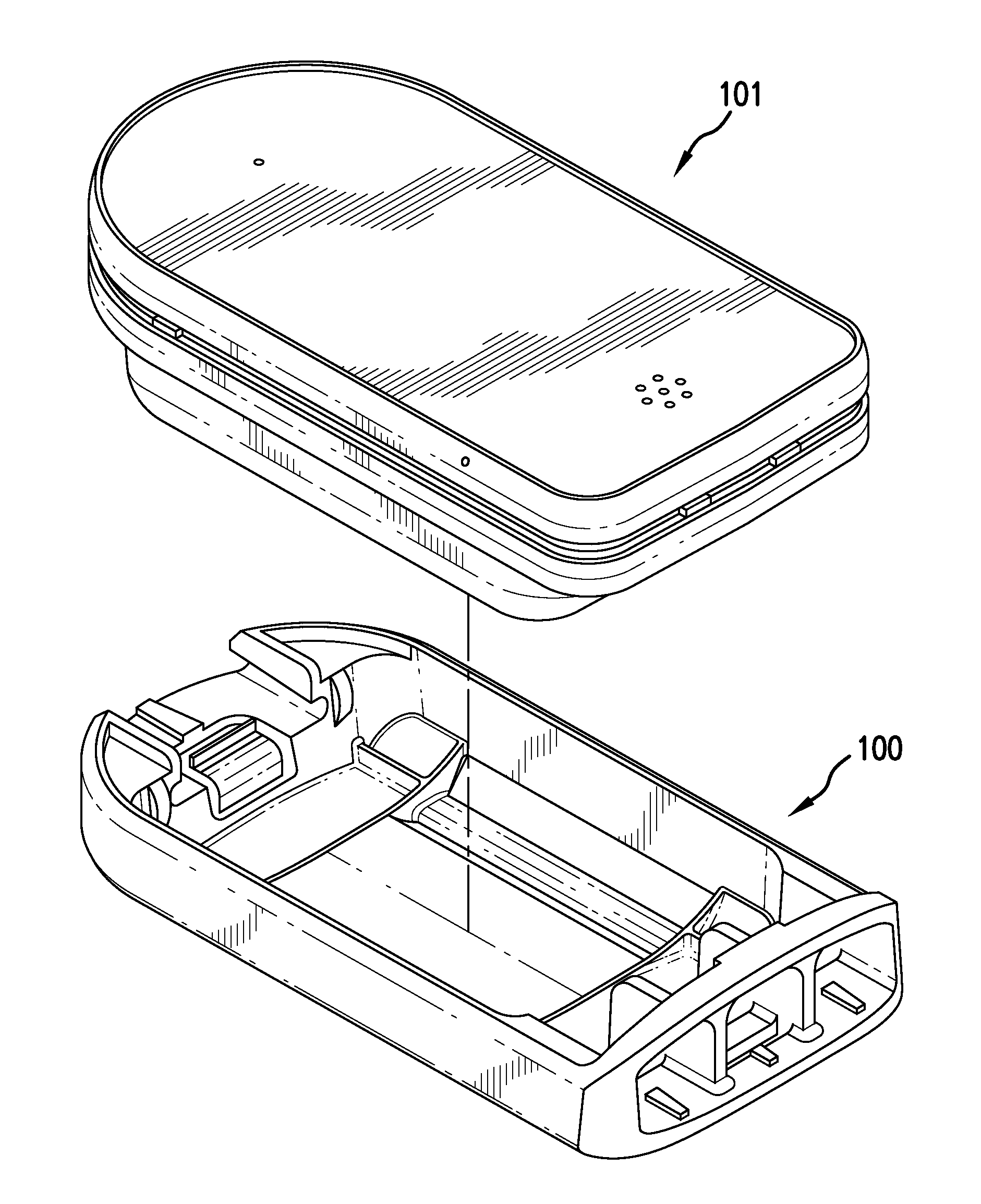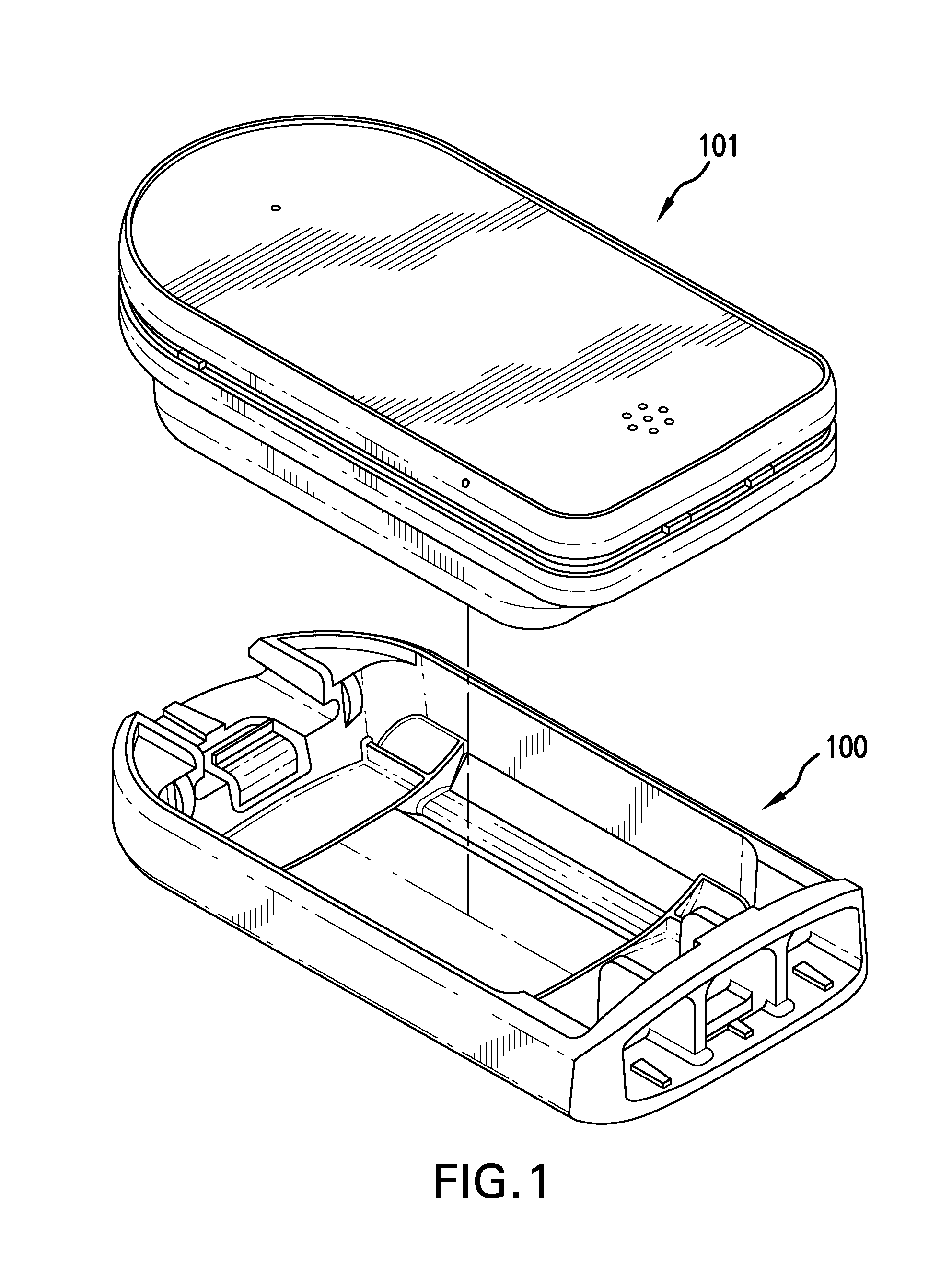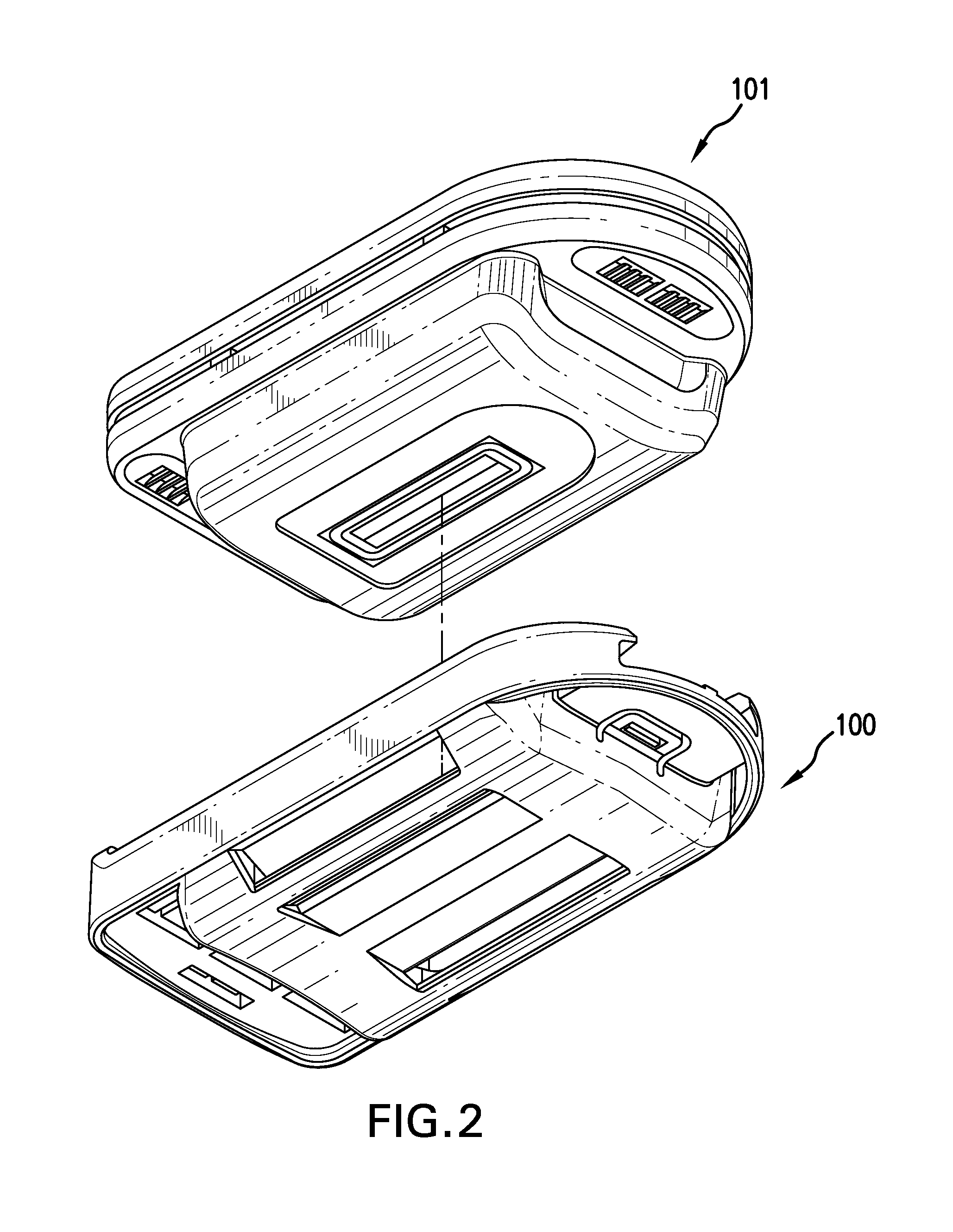Modular wrist-worn processor for patient monitoring
a wrist-worn processor and module technology, applied in the field of module wrist-worn processor for patient monitoring, can solve the problem of relative more expensive electronic components
- Summary
- Abstract
- Description
- Claims
- Application Information
AI Technical Summary
Benefits of technology
Problems solved by technology
Method used
Image
Examples
Embodiment Construction
[0043]FIGS. 1 and 2 depict a top and bottom view of a base 100, and housing 101 which releasably attaches thereto, for use in the body-worn data processing system of the present invention. The housing provides a water-proof plastic casing housing a processor (the “system processor”) and associated electronics (collectively the housing and the associated electronics being referred to herein as a “processing module”), and features openings on the underside that provide access to electrical interconnects that interface to connectors at the terminal ends of cables leading to the system's various sensors and other peripherals. In addition to being waterproof, this design facilitates activities such as cleaning and disinfection, as the housing contains no openings for fluids common in the hospital, such as water and blood, to flow inside.
[0044]The base is preferably designed as a disposable component which receives an electronics housing preferably designed for multiple uses. As used here...
PUM
 Login to View More
Login to View More Abstract
Description
Claims
Application Information
 Login to View More
Login to View More - R&D
- Intellectual Property
- Life Sciences
- Materials
- Tech Scout
- Unparalleled Data Quality
- Higher Quality Content
- 60% Fewer Hallucinations
Browse by: Latest US Patents, China's latest patents, Technical Efficacy Thesaurus, Application Domain, Technology Topic, Popular Technical Reports.
© 2025 PatSnap. All rights reserved.Legal|Privacy policy|Modern Slavery Act Transparency Statement|Sitemap|About US| Contact US: help@patsnap.com



